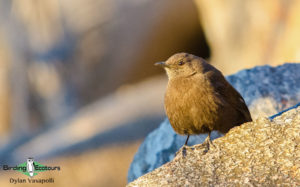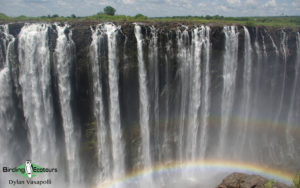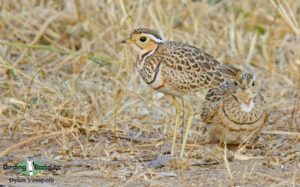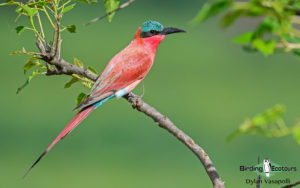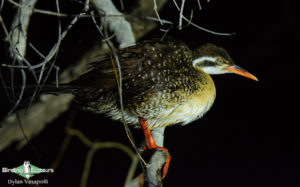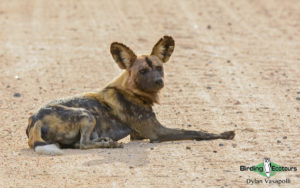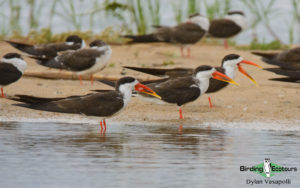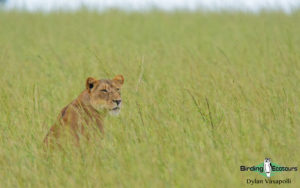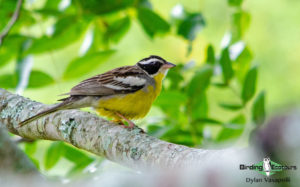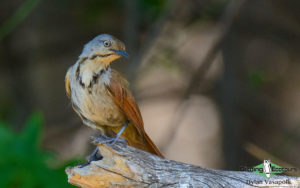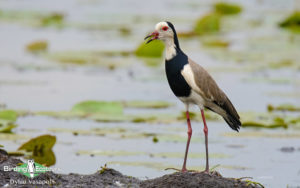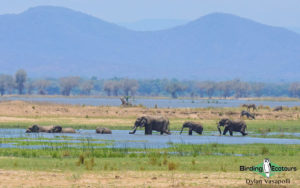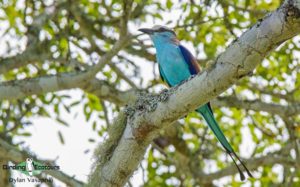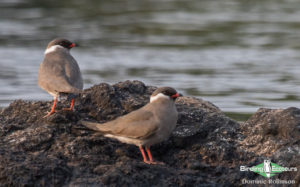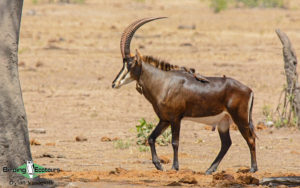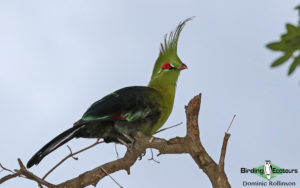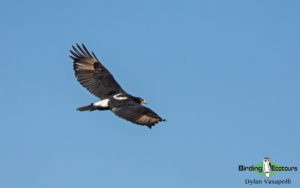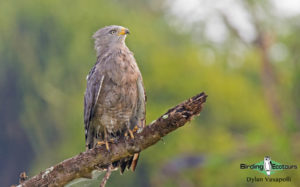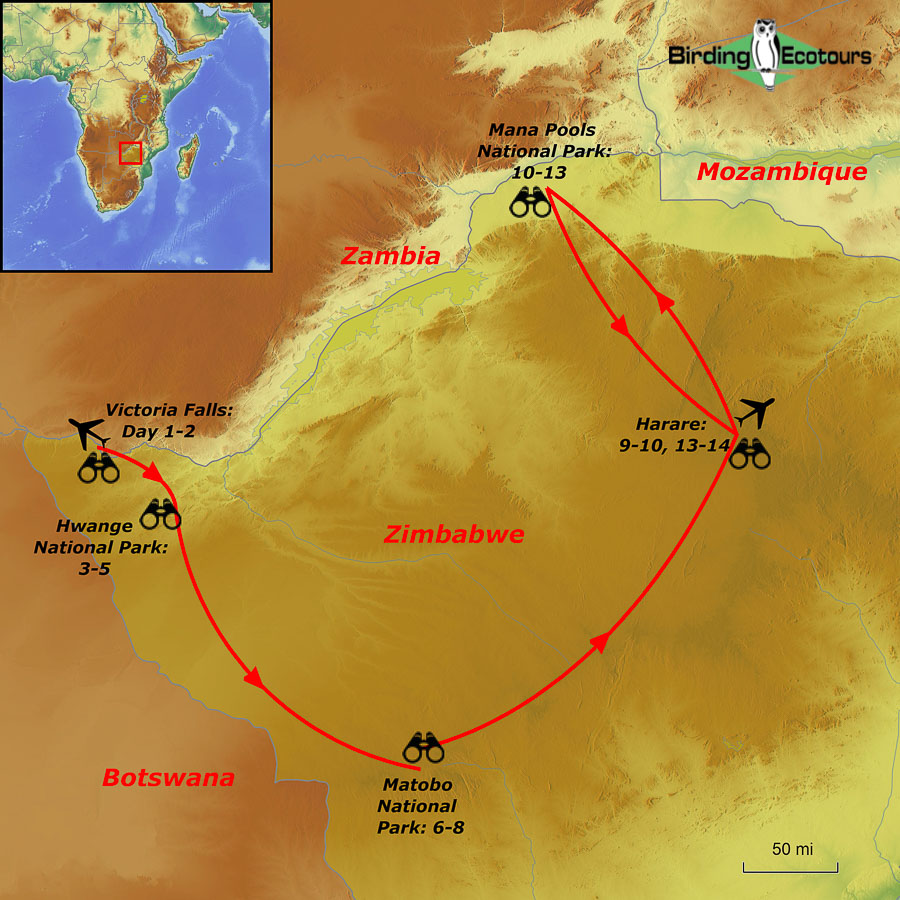Premium Zimbabwe: The Ultimate Bird and Mammal Safari
Go to: Zimbabwe Birding Tours | Birding Tours in Africa | All our birding tours
Premium Zimbabwe: The Ultimate Bird and Mammal Safari
September 2024/2025
Zimbabwe is an absolutely fabulous country – scenically wonderful, with very friendly people fluent in English and a long history in wilderness conservation that has led to the establishment of a number of excellent and highly biodiverse reserves and national parks throughout the country. Zimbabwe has a good road network, and it also holds the distinction of being one of the few African countries in which you can see a great deal without the use of a 4×4 vehicle. With an improving political leadership and the introduction of US Dollars as tender throughout the country, Zimbabwe is once again becoming a very popular destination to birders and travelers alike. This comfortable 14-day tour is one of our premium options – with a split focus on the birds and mammals occurring throughout the western half of the country, ensuring we have adequate time at each destination, and offering you an exclusive safari experience in some of the country’s premier reserves.
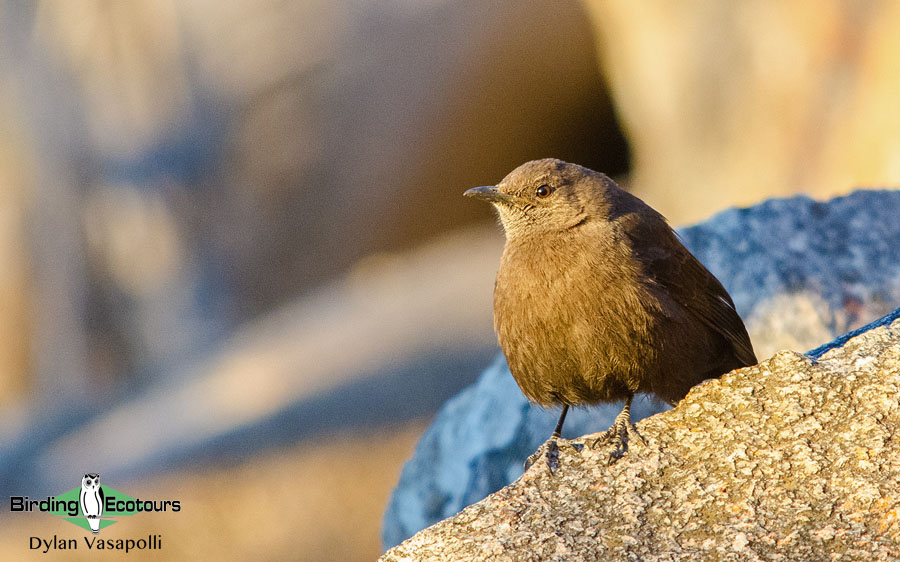
This tour begins at one of the foremost attractions of the country, Victoria Falls. As one of the seven natural wonders of the world, these incredible falls are indicative of what is to come as we journey through Zimbabwe, with excellent birding and wildlife viewing to be had in stunning surroundings. A visit to one of Africa’s great game parks follows, with Hwange National Park next on the cards. This massive park (larger than the European country of Belgium) hosts the full spectrum of Africa’s plains game, including ‘The Big 5’, along with a great many special birds, and offers one of the best African Safari experiences out there! We next visit the rocky outcrops of the Matobo National Park, where birding is our primary focus and we’ll look for high concentrations of raptors (including the highest density of the magnificent Verreaux’s Eagle on the planet), and others such as the near-endemic Boulder Chat.
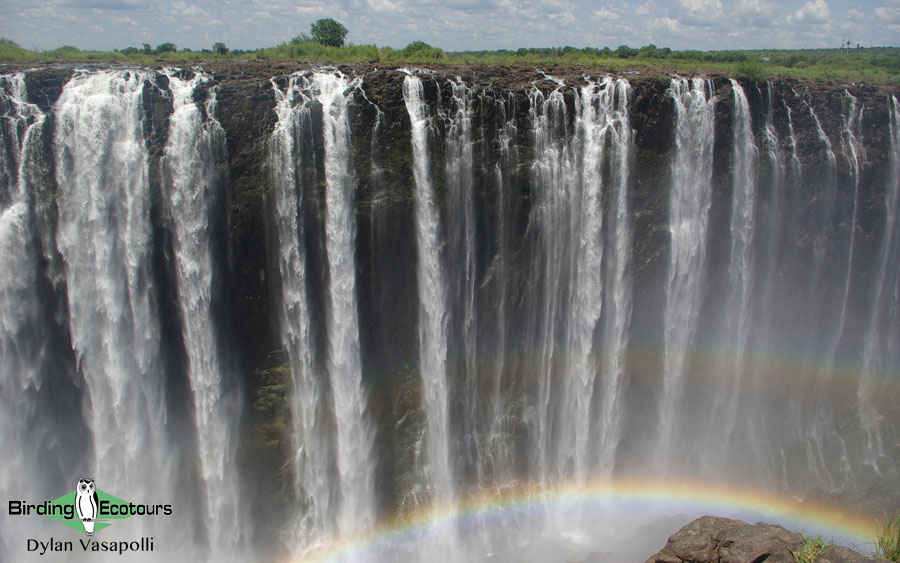
A stop in the country’s capital city, Harare, gives us a break in transiting to what is our end point of the tour, the famous Mana Pools National Park, while also serving as a birding stop, as we visit various miombo-woodland birding areas around the city – this is a unique south-central African restricted woodland that has a whole host of bird species restricted solely to this habitat and is of significant importance! Mana Pools National Park is a lush reserve at the bottom of the breathtaking Zambezi River Valley (here, the Middle/Lower Zambezi, one of Africa’s biggest rivers, is bounded by steep and immense escarpments on either side) and is full of excellent birds, including the localized Lilian’s Lovebird, and a wide spectrum of mammals. Indeed, Mana Pools is a famous predator viewing area, with high concentrations of Lion, Leopard and the rare African Wild Dog all serving as a precursor to the wonders that await.
Itinerary (14 days/13 nights)
Day 1. Arrival in Victoria Falls
This is an arrival day, and you are welcome to arrive at your leisure throughout the course of the day. That being said, most flights usually arrive in the late morning to early afternoon period, and following your arrival, you will be transferred to our comfortable lodge located on the Zambezi River. Should time be available in the afternoon, we will undertake a short birding excursion, getting familiar with some of the area’s species. These might include the likes of African Green Pigeon, Trumpeter Hornbill, White-fronted Bee-eater, Tropical Boubou and Scarlet-chested Sunbird, along with some more sought-after species such as Collared Palm Thrush.
Overnight: A’Zambezi River Lodge
Day 2. Victoria Falls
We have a full day to spend in and around Victoria Falls. Our day will likely start off with a morning birding excursion to some of the best birding sites around the town, where we’ll focus on the mixed acacia thornveld and dense riverine woodland, while also visiting certain sections of the mighty Zambezi River where we might be able to see various waterbirds. Our primary focus will be on the area’s core specials, which are Rock Pratincole, African Skimmer, Schalow’s Turaco, Brown-necked Parrot, Collared Palm Thrush and Brown Firefinch, amongst others. Many more widespread and common species occur here, and we should also see the likes of Grey Go-away-bird, African Fish Eagle, Green Wood Hoopoe, Golden-tailed Woodpecker, African Paradise Flycatcher, Red-faced Cisticola, Yellow-breasted Apalis, Burnt-necked Eremomela, Ashy Flycatcher, White-browed Robin Chat, Village Weaver, and African Pied Wagtail. This is a very birdy area, and we are sure to build up a long bird list. Following breakfast, we will visit Victoria Falls themselves, and spend some time admiring one of the seven natural wonders of the world. While the water flow will not likely be at its peak (which is during March – May), there should still be a large amount of water coming over the falls, which creates a fine spray that makes the falls look as though they are shrouded in smoke – you will then understand why it is called ‘The Smoke that Thunders’.
We may decide to explore the nearby Zambezi National Park for a short while in the afternoon, where the broad-leaved woodland holds birds such as Bradfield’s Hornbill, Tinkling Cisticola, Stierling’s Wren-Warbler and Pale Flycatcher, before we undertake a late afternoon boat cruise on the Zambezi River, upstream of Victoria Falls. The water levels of the river do determine what species are present, but we should find an array of waterbirds including Water Thick-knee, White-crowned Lapwing, Rock Pratincole, African Skimmer, Striated Heron, African Openbill, and Giant and Pied Kingfishers, while we will keep a special eye open for African Finfoot (the Zambezi River must surely be one of the most reliable sites to find this species), White-backed Night Heron and perhaps even Pel’s Fishing Owl (the latter two of which are more rarely seen).
Overnight: A’Zambezi River Lodge
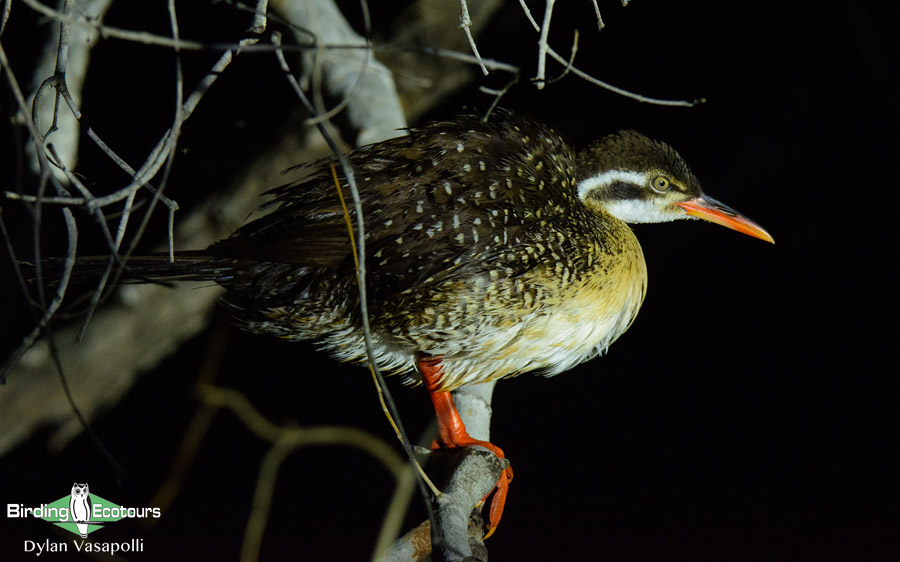
Days 3 – 5. Hwange National Park
We have a final morning available to explore Victoria Falls and surrounding areas, should we still be looking for any of the birds mentioned above (under Day 2). We will then transfer southwards to the vast Hwange National Park, where we should arrive in the early afternoon (a roughly three-hour drive). We will base ourselves at a very comfortable and exclusive lodge for the duration of our stay here (three nights) – allowing us to explore this area fully. Our days will be broken up into a mix of activities, most of which will be game drives, but can also be game/bush walks, and some down time during the heat of the day (often allowing us to see the plethora of game coming to drink from the waterhole in front of the lodge).
Hwange National Park is a massive reserve, and while we will not be able to explore all of it, we will cover a range of areas, including time in the teak and mopane woodlands of the eastern part of the park, along with the more open ‘typical’ savannah areas (mainly grassy plains with the odd tree present) and Kalahari-like acacia thornveld. Various waterholes present in the park act as the main lifeline here, and draw in the majority of the wildlife – we will be sure to spend some of our time around these waterholes as the wildlife viewing opportunities are almost endless. Although our focus shifts to include the many mammals here, we will not be ignoring the birds, and we will be searching for a number of specials that call this area home. Often times, we find that we enjoy incredible mammal encounters while looking for birds, and the two go comfortably hand-in-hand.
This is a very bird-rich reserve, and we are sure to find a great many species during our time here, but some of the more important ‘specials’ we’ll be on the lookout for include; Secretarybird, Grey Crowned Crane, Kori Bustard, Three-banded Courser, Red-billed Spurfowl, Burchell’s Sandgrouse, Racket-tailed Roller, Southern Ground Hornbill, Bradfield’s Hornbill, Meyer’s Parrot, Crimson-breasted Shrike, Mosque Swallow, Arnot’s Chat, Southern Pied Babbler and Yellow-billed Oxpecker, amongst others. The park is an excellent area for raptors, and we’re sure to come across a wide range of vultures, such as Lappet-faced, White-headed, White-backed and Hooded Vultures, Bateleur, Martial, Tawny and Wahlberg’s Eagles, Brown and Black-chested Snake Eagles, Pale Chanting Goshawk, Dickinson’s Kestrel, and even the scarce African Hobby. A wide array of other species is likely, and include a range of francolins, barbets, bee-eaters, hornbills, kingfishers, mousebirds, woodpeckers, shrikes, robins, flycatchers, starlings, sunbirds, waxbills and many more.
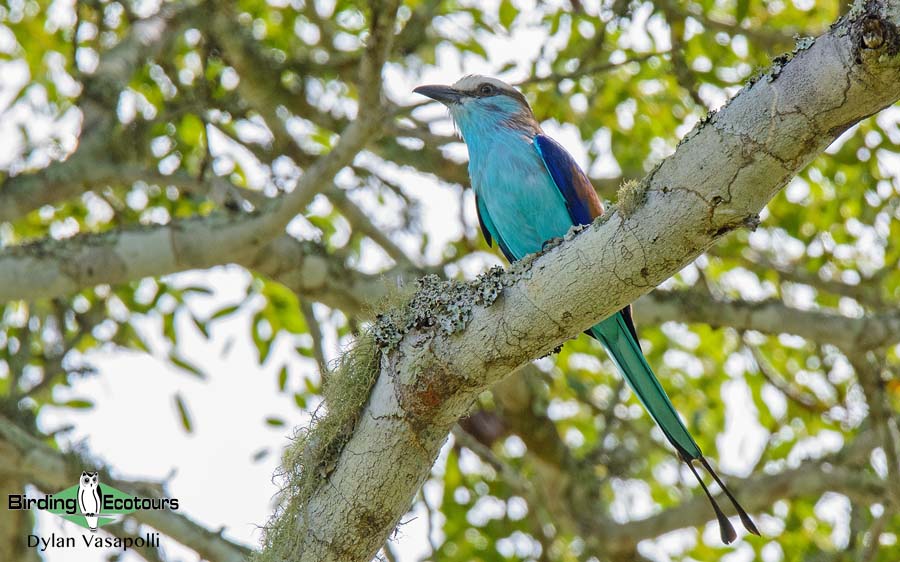
The mammals are an important feature of the park, naturally, and the full spectrum of Africa’s plains game and megafauna all occur here. The Big 5 occur here, and although sightings of White and Black Rhino are scarce, the others, namely African Elephant, African Buffalo, Lion, and Leopard are all frequent. In addition, Hwange is a great area to find Cheetah, and if you’re lucky, African Wild Dog. Smaller cats such as African Wild Cat and Serval occur, but are rarely seen. A wide range of other mammals occur, including such characteristic species as Giraffe, Warthog, Plains Zebra, Blue Wildebeest and Hippopotamus, along with many antelope species such as Waterbuck, Impala, Greater Kudu, Eland and the prized Sable and Roan Antelope. This is a rich mammal area, and our time spent in and around the park gives us the best access to finding all of the above-mentioned species, and more.
Overnight: Ivory Lodge, Hwange National Park
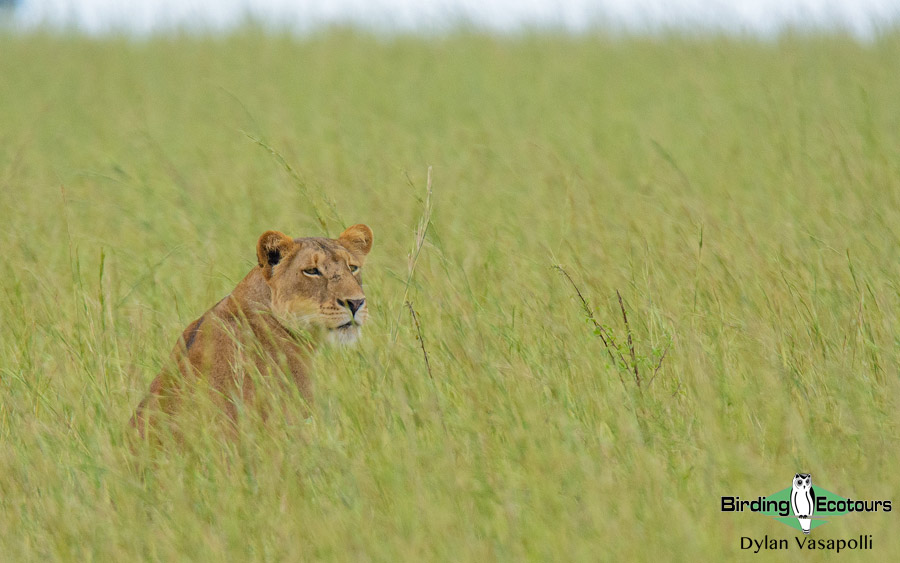
Day 6. Hwange to Matobo National Park
Following our final morning spent exploring the wonders of Hwange National Park, looking for any birds and mammals that may yet be eluding us, we will make the transfer even further south, through Bulawayo, to the Matobo National Park (roughly four hours). We will likely arrive in the mid-late afternoon, and after checking into our stunning lodge, set in the unique rocky outcrops that dominate this area, we will explore the surrounds on foot. This will allow us to get familiar with some of the birds occurring in the area, with species such as Yellow-fronted Tinkerbird, Black Cuckooshrike and Eastern Miombo Sunbird regularly featuring. We may also be lucky and find one of the area’s most special birds – Boulder Chat. This unique bird is virtually restricted to Zimbabwe, with small outlaying populations occurring in neighboring Botswana and Mozambique, along with Malawi, and is an important target bird on this trip.
Overnight: Matobo Hills Lodge
Day 7. Matobo National Park and surrounds
We have a full day at our disposal to spend in the area, exploring the Matobo National Park. As touched on above (under Day 6), Boulder Chat is one of our primary targets for the area, and indeed the trip, and we will spend some time tracking down this species. As their name suggests, they are a rock-loving species, and frequent the many boulders and rocky outcrops that dot this area. This area also hosts a strong and thriving population of Verreaux’s Eagle – another bird we hope to find here. While we’re watching the skies, we may also come across other raptors, such as Martial and Long-crested Eagles, along with smaller raptors such as Augur and Lizard Buzzards, Shikra, Ovambo Sparrowhawk and Lanner Falcon. Other species we’re likely to find while exploring the area include the curious and isolated population of Cape Batis, along with Mottled Swift, Rock Martin, White-crested Helmetshrike, Mocking Cliff Chat, Lazy Cisticola, Striped Pipit and Red-headed Weaver. We will encounter our first tracts of miombo woodland here, and although these somewhat isolated patches of miombo woodland don’t support many of the true specials of this woodland, a few miombo species such as Southern Hyliota occur. We will encounter far superior patches of miombo woodland whilst we’re in Harare (Days 8/9, below). Mammals are somewhat limited in the park, although it does support good populations of both White and Black Rhino (but it is difficult to see them in this mostly wooded habitat), and the scarce Yellow-spotted Hyrax also occur amongst the more common Rock Hyrax. Freckled Nightjar and the mackinderi race of Cape Eagle Owl are specials to be sought after dark, but note that the owl is rarely seen.
Overnight: Matobo Hills Lodge
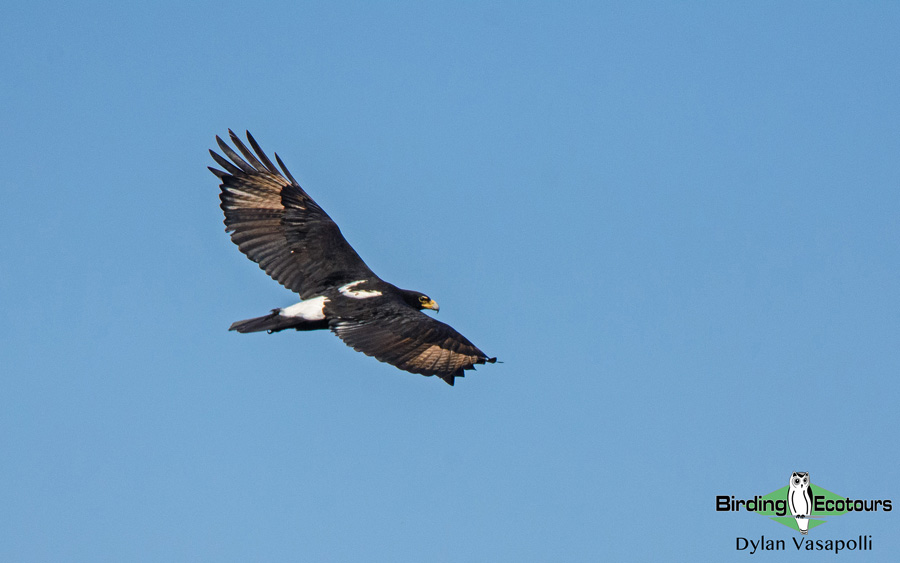
Day 8. Matobo to Harare
We have a final morning to spend around the Matobo National Park, searching for any of the species mentioned above (under Day 7) that we might still be missing. Unfortunately, a long drive awaits us to get to Harare, our next destination (roughly six hours), and we cannot spend too much time birding this morning. This will mostly be a travel day, and we will likely only arrive at our very comfortable and well-appointed Harare lodge in the late afternoon.
Overnight: Willow Lodge, Harare
Day 9. Birding Harare
Harare is generally a birdy city, with the lush gardens and woodlands allowing birdlife to thrive. Additionally, the city and some of the surrounding areas on the Mashonaland Plateau host some of the finest tracts of the unique miombo woodland in the country. Dominated by brachystegia trees, covered in lichen and moss, this woodland hosts a number of species virtually confined to these patches. We have a full day at our disposal to explore some of the birding sites in and around Harare, specifically targeting the miombo specials. Birding in the miombo can be tough going, with the birds often confined to ‘bird parties’ – where groups of birds gather and forage and feed together slowly moving through the woodland, however with enough time, we are bound to come across a few of these ‘bird parties’. Species such as White-crested Helmetshrike and Green-capped Eremomela are often the first birds to be found, before the trees come alive with other species, and some of our primary targets will be species such as Southern Hyliota, White-breasted Cuckooshrike, Green-backed Honeybird, Red-faced Crombec, Miombo Tit, Grey Penduline Tit, Stierling’s Wren-Warbler, Miombo Rock Thrush, African Spotted Creeper, Black-eared Seedeater and Cabanis’s Bunting. Harare is a great place to see Whyte’s Barbet, and we will hopefully come across this prized barbet during our stay.
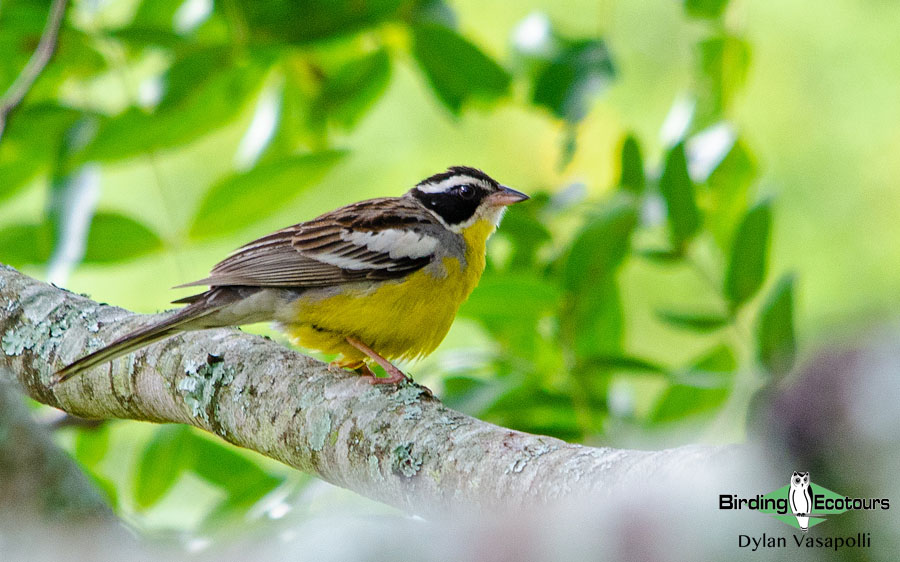
Harare is also famous for the excellent tropical wetland birding it hosts – however, this is only during the rainy summer season (Jan – Mar), and the majority of the wetlands will be dry at this time of the year. That being said, resident species such as Marsh Owl, Senegal Coucal, African Yellow Warbler, Croaking Cisticola, a trio of longclaws, Cape, Yellow-throated and the prized Rosy-throated Longclaws, Orange-breasted Waxbill and Yellow-mantled Widowbird can still be found.
Overnight: Willow Lodge, Harare
Days 10 – 12. Mana Pools National Park
We have a final morning to spend birding around Harare, searching for any of the species mentioned above (Day 9) which we may still be missing. However, with a long transfer (roughly five hours) to reach our next and final destination of the trip – Mana Pool National Park, we will be keen to get going early. While the trip to Mana Pools will likely be uneventful, stops en-route, such as around Lion’s Den, may provide us with species such as Black-chested Snake Eagle, Red-faced Cisticola, Copper Sunbird and Spectacled Weaver. Eventually, we will descend sharply into the verdant Zambezi Valley, and proceed onwards to our comfortable and well-appointed exclusive lodge, in time for our first activity.
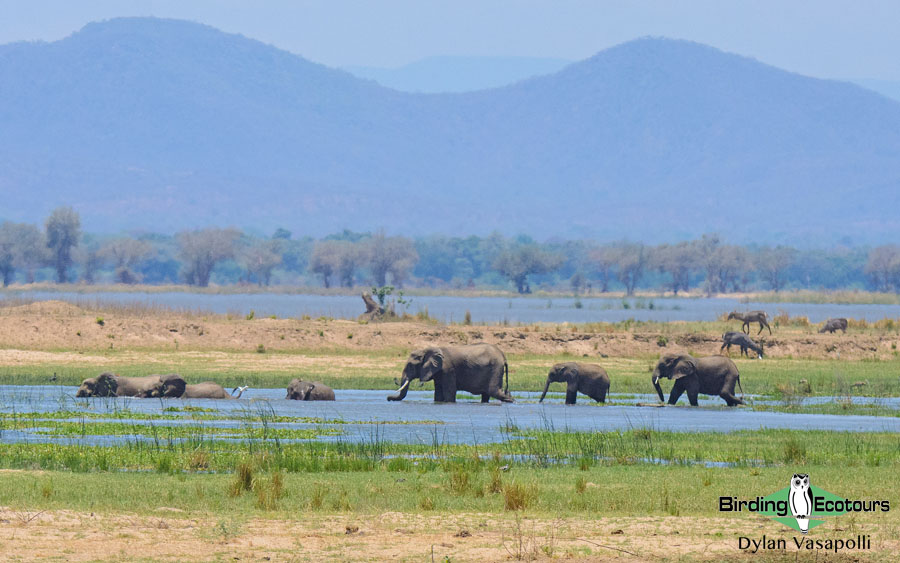
Mana Pools is another of Africa’s great game parks, and it is one of the continent’s premier wildlife-viewing areas! Like their mammal counter-parts, the birdlife within the area is nothing short of outstanding – with an incredibly diverse array of species, including some very special birds, all awaiting us! We will spend three nights in the area, and our time will be taken up with a mix of birding/wildlife drives as we navigate through the area, along with undertaking short walks through the wilderness – not dissimilar to what we will undertake at Hwange National Park earlier on in the trip. Our focus will be on the birds and mammals alike in this area, and we find that the two work in perfect harmony with each other. A wide range of habitat is covered, from mixed bushveld on rocky slopes covered in baobab trees, sections of tall, gallery mopane woodland, through to dense riverine thickets, dry riverbeds, and large areas of open riverine woodland, with scattered pans and wetlands dotted throughout the region. The Zambezi River flows through the park, and is the primary reason for the incredible diversity here.
Although the bird species occurring here are too many to mention them all, we will focus our efforts on the following ‘specials’. The range of mixed woodlands, bushveld and baobab dominated areas host one of our core targets, Lilian’s Lovebird, along with the likes of both Mottled and Böhm’s Spinetails, Bennett’s Woodpecker, Dickinson’s Kestrel, Meyer’s Parrot, Retz’s Helmetshrike, Mosque Swallow and Orange-winged Pytilia. Many raptors nest within these areas, and we should keep our eyes open as African Harrier-Hawk, Hooded and White-backed Vulture, Brown Snake Eagle, Bateleur, Martial and Tawny Eagles, African Hawk Eagle, Lizard Buzzard, Dark Chanting Goshawk and Shikra, are all likely. We will search areas of mopane woodland for the scarce Arnot’s Chat and if we’re lucky, Racket-tailed Roller.
The denser thickets, often lining some of the smaller streams and dry riverbeds, will be searched for many denizens, such as Crested Guineafowl, Narina Trogon, Eastern Nicator, the localized Livingstone’s Flycatcher, Purple-banded Sunbird and Red-throated Twinspot, amongst others. The many wetlands and pans, along with the Zambezi River support a wide array of waterbirds and we’re sure to find a number of ducks, plovers, storks, herons and egrets here. Some of the more important species we’ll be targeting include Long-toed and White-crowned Lapwings, Greater Painted-snipe, Collared Pratincole, Saddle-billed Stork and Goliath Heron. Western Banded Snake Eagle can often be found in the trees surrounding these water bodies, and we may also stumble upon the highly prized Pel’s Fishing Owl if we’re lucky. Nocturnal birding can also be rewarding here, and the bulk of our focus will be on finding the scarce Three-banded Courser. Other species such as African Barred Owlet, Verreaux’s Eagle-Owl and African Wood Owl are usually around, along with Fiery-necked Nightjar.
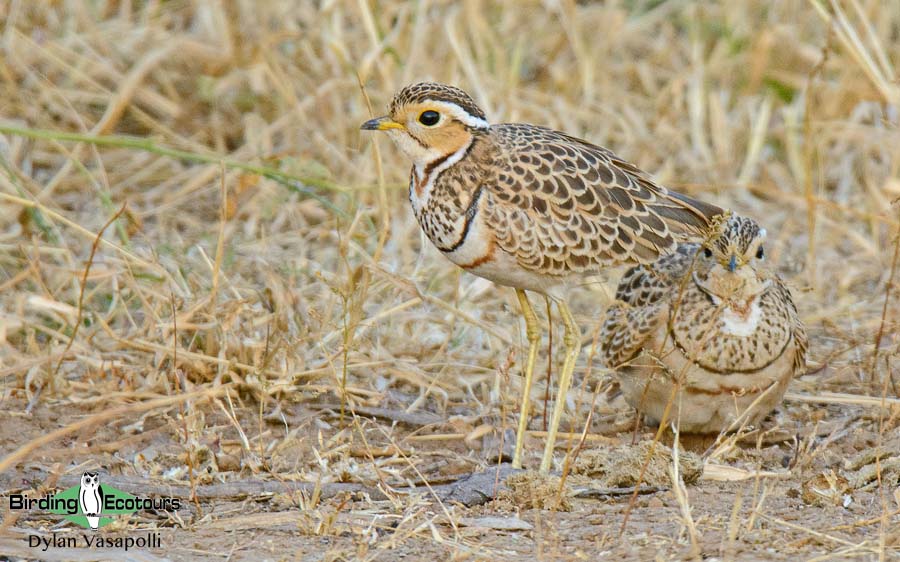
A similar selection of mammals occurs here, to those found in Hwange National Park, which we visit earlier on in this trip, however Mana Pools is more famous for its vast numbers of African Elephants and its predator sightings, in particular African Wild Dog. Mana Pools is one of the strongholds of this rare and highly prized predator, with a number of packs present throughout the park. Additionally, Lion and Leopard are regularly seen. Some of the other mammals we’re likely to have seen in Hwange also occur here, such as African Buffalo, Greater Kudu, Eland, Waterbuck, Plains Zebra and Hippopotamus. We also have a chance of seeing some of the more nocturnal mammals found here such as African Civet, Side-striped Jackal, Spotted Hyena and Honey Badger.
Overnight: Kavinga Safari Lodge, Mana Pools National Park
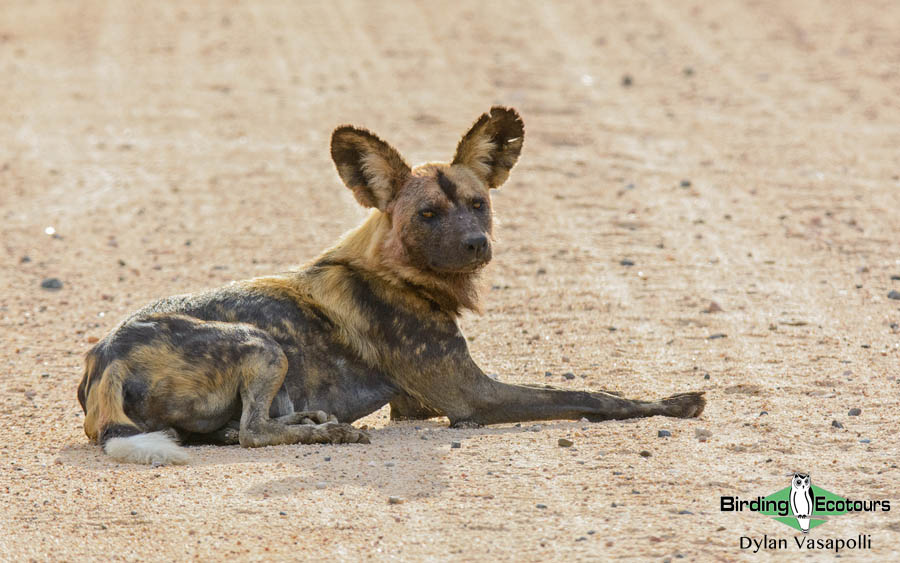
Days 13. Mana Pools to Harare
We have a full final morning available to us to explore the area, with our last activity, searching for any of the birds and mammals mentioned above (Days 10 – 12), that we may not have seen yet. Eventually, we will need to depart this incredible wildlife park, and make the trip back to Harare (roughly five hours). We will likely arrive in the late afternoon, and will settle in for our final evening meal together, reminiscing about all the many excellent birds and mammals we’ll have seen on this trip!
Overnight: Willow Lodge, Harare
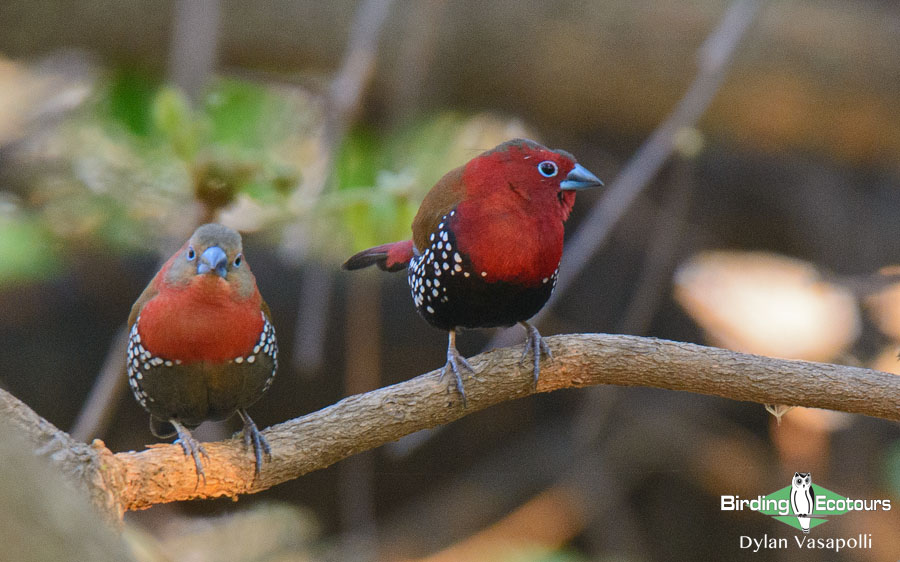
Days 14. Departure from Harare
The tour comes to an end after breakfast – where you can depart at your leisure. Please note that there are no activities scheduled for the day, however, should you have a late afternoon/evening departure from Harare we will be able to assist in organizing activities for you.
Please note that the itinerary cannot be guaranteed as it is only a rough guide and can be changed (usually slightly) due to factors such as availability of accommodation, updated information on the state of accommodation, roads, or birding sites, the discretion of the guides and other factors. In addition, we sometimes have to use a different international guide from the one advertised due to tour scheduling.
Download Itinerary